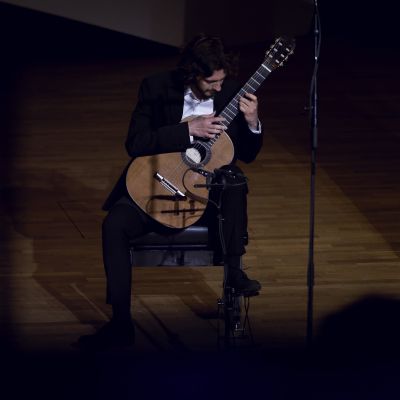
Klassiek gitaar
De klassieke gitaar zoals we die vandaag de dag kennen, is een instrument met een relatief korte geschiedenis. Hoewel sporen van tokkelinstrumenten teruggaan tot de Oudgriekse periode, verscheen het eerste zesjarige instrument pas aan het einde van de 18e eeuw. Dit specifieke instrument kende een aantal hoogtepunten in populariteit: beroemde musici zoals Schubert en Paganini speelden en componeerden muziek voor deze gitaar. Pas aan het einde van de 19e eeuw werd de gitaar zoals we die vandaag de dag kennen geboren. Groter van formaat, luider van klank en comfortabeler om te bespelen. Het bracht een volledig vernieuwde opvatting van het instrument met zich mee, vooral in de 20e eeuw. Nu kon de gitaar zijn opwachting maken in grote concertzalen, soms zelfs begeleid door het orkest. Veel van de mooiste concerten uit de muziekgeschiedenis werden aan dit instrument opgedragen, met name het vermaarde Concerto de Aranjuez.
